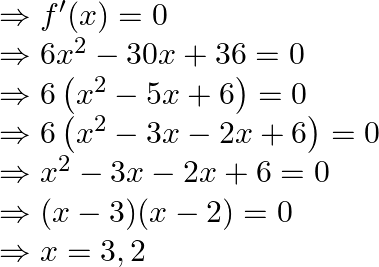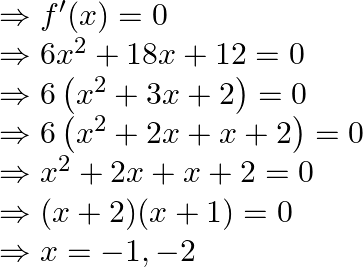Solution:
(i) Given that ![]()
Now with respect to ![]() differentiating above equation, we obtain
differentiating above equation, we obtain

For ![]() we have to find critical point, we must have
we have to find critical point, we must have

So, ![]() if
if ![]() and
and ![]() and
and ![]() if
if ![]()
Therefore, ![]() increases on
increases on ![]() and
and ![]() is decreasing on interval
is decreasing on interval ![]()
(ii) Given that ![]()
By differentiating above equation we obtain

For ![]() we have to find critical point we must have
we have to find critical point we must have

So, ![]() if
if ![]() and
and ![]() if
if ![]() and
and ![]()
Therefore, ![]() increases on
increases on ![]() and
and ![]() is decreasing on interval
is decreasing on interval ![]()
